Last night’s class demonstration was plates & platters. My beginners are progressing
quite nicely… cylinders, bowls, mugs… and now plates! I explained to them that plates
are fairly easy to throw, and that the drying & trimming of them is the hard part.
In class I threw two plates. But of course, I can’t leave a plate plain…
so tonight I stamped them up!
The class demo four-pound plate…
And now for the six-pound platter…
Plus, we have new clay at Lillstreet Art Center. For years we’ve had the same selections
of stoneware, B-Clay and porcelain. We’re now trying something new from Continental Clay.
It’s Stoneware with Ochre… which from what we’ve seen turns out to be a dark chocolate
brown after firing in a cone 10 reduction kiln. This is my first time trying the new clay…
hence the slight “greenish” hue in the clay. It was fun to throw with… although the color
was a little off-putting.

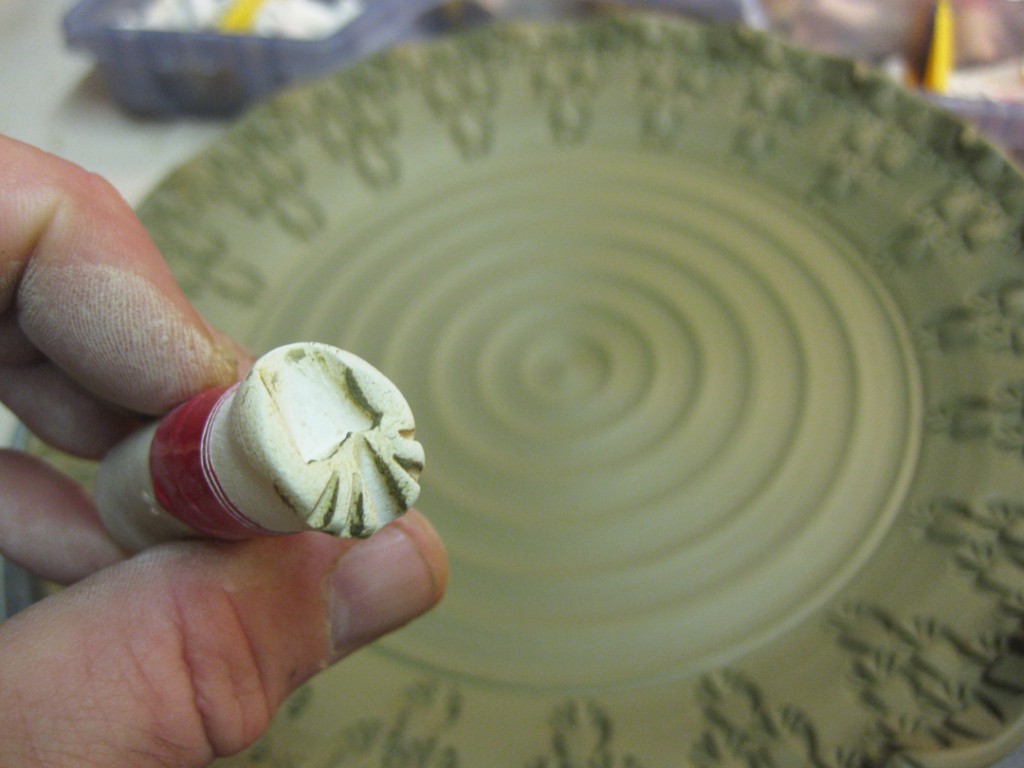
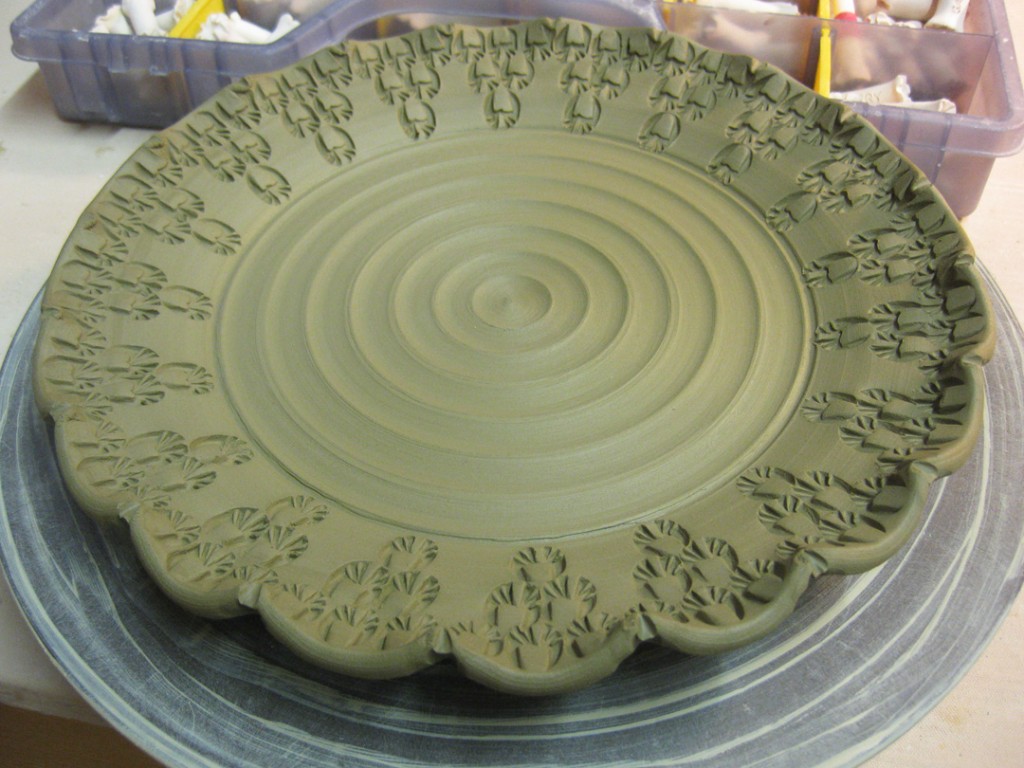
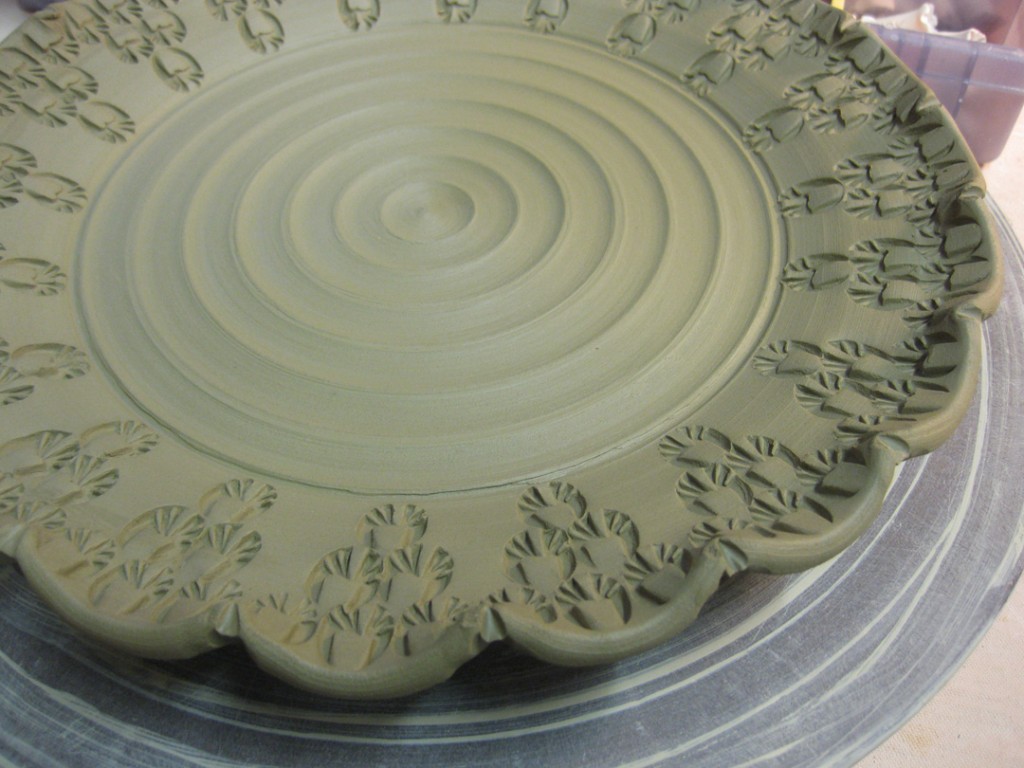
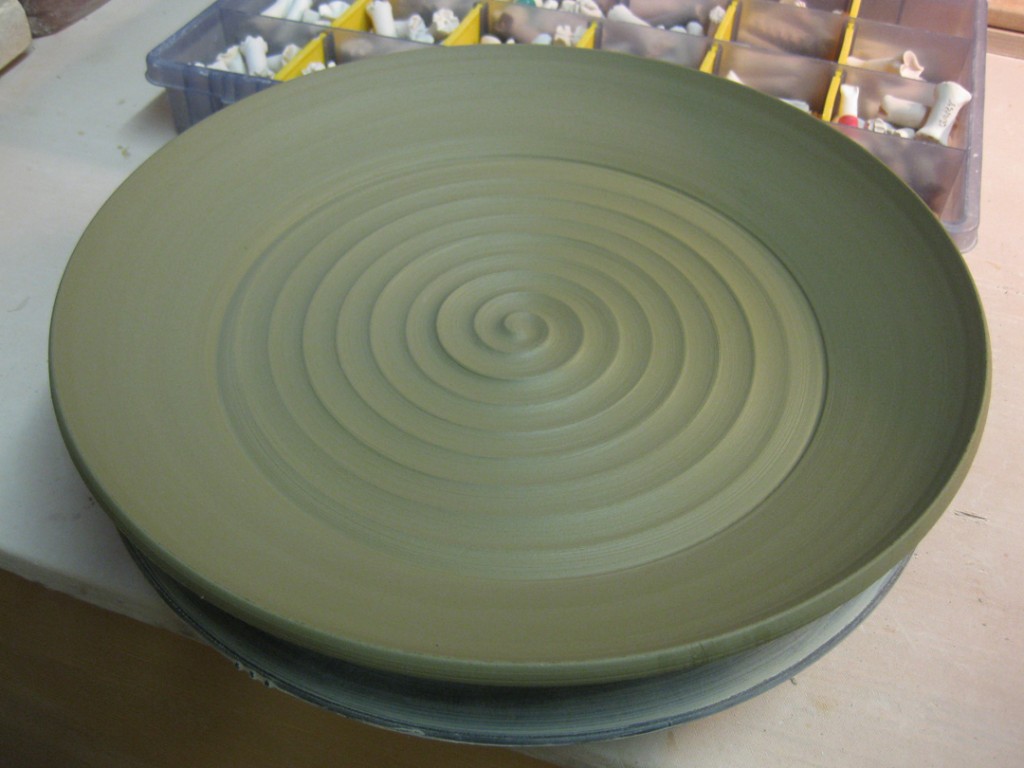
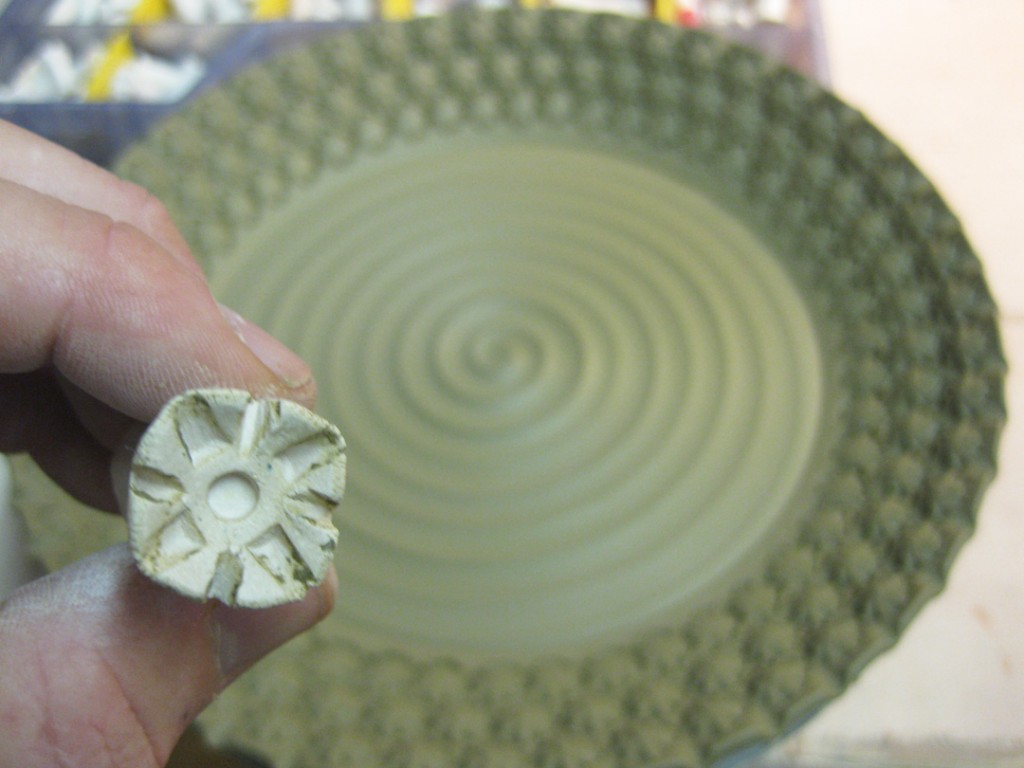

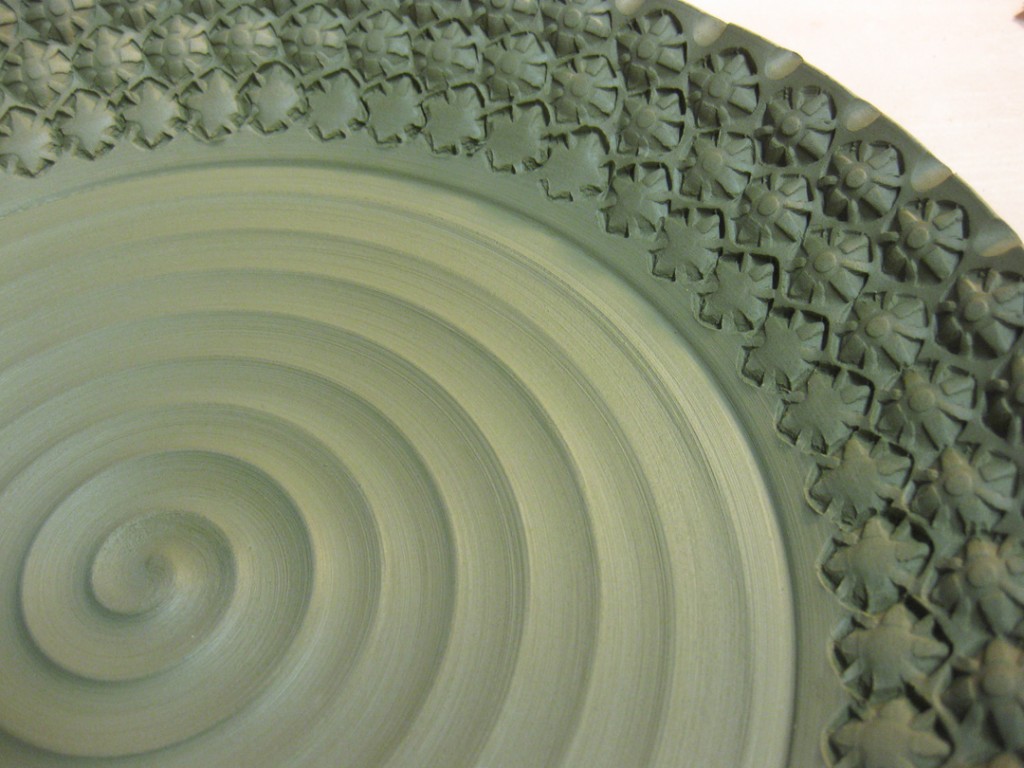
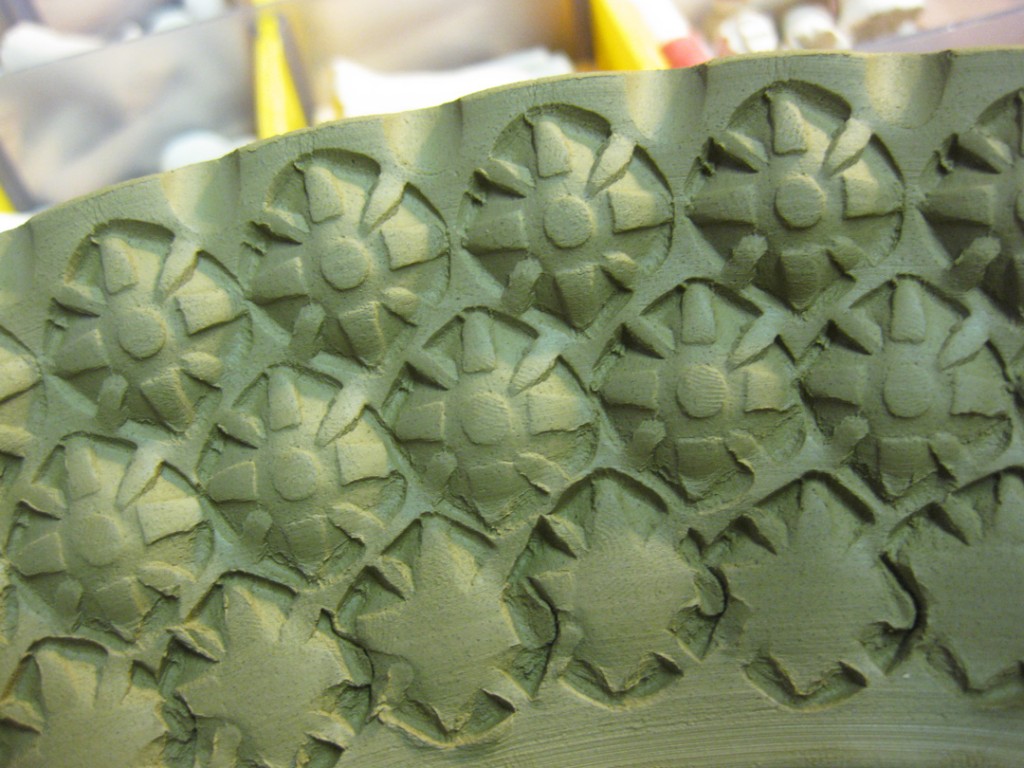
At what stage of dryness do you start with stamping? I’m starting to experiment with stamped designs and it’s alway tricky when you have to leave your work covered for days before you can get back to it in the classroom.
I typically wait until the “shine” and stickiness is gone before I stamp. I tell my students it’s before I trim… so a little softer than a good leather-hard. Sometimes I rush the process and end up not being happy as the stamp gets sticky and the impression isn’t as crisp & clean. But then again, if you wait too long, the stamp doesn’t press in very far – so the stamp doesn’t go in, and if you press too hard you might crack your pot. I generally never let them go for a week without stamping them! I know it’s a fine line… and timing is everything.
Wow! Very cool….